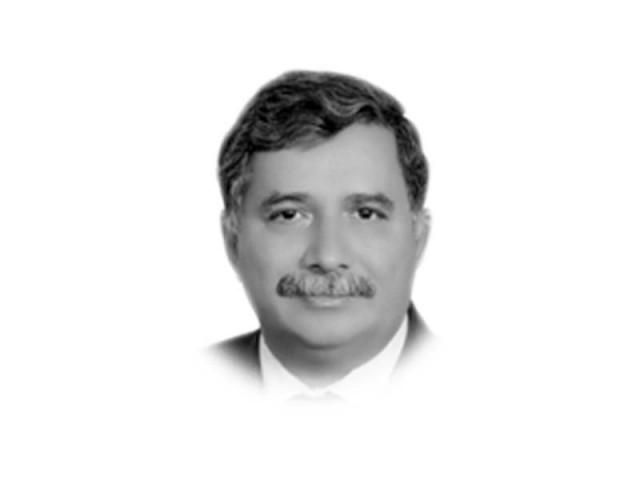Trading with Afghanistan: a path to a better future
Trade between the two countries will create capital and increase investment for industrial production

For the last four decades, Pakistan and Afghanistan, particularly, the Pakhtun belt on both sides, have suffered the horrors and devastations of war. Even though the withdrawal of the US brings new challenges for both Afghanistan and Pakistan, new prospects for trade have also emerged. It now depends on the governments of the two countries how they transform the challenges into opportunities.
The head of the Centre for Research and Security Studies Pakistan (CRSS), Imtiaz Gul, arranged a visit to the Pak-Afghan Joint Chamber of Commerce and Industry, led by Khan Jan Alkozi. I had the honour of attending a dinner hosted in honour of the guests by CRSS. In an atmosphere of cordiality and useful exchange of views, everyone agreed to seize the opportunity and create conducive conditions for trade. The delegation also deliberated upon various issues and problems faced by the traders and suggested remedial measures.
Both the hosts and the guests agreed that Pakistan and Afghanistan share boundaries, common history, culture, music, literature, and other social values. Unfortunately, the two countries have often been entangled in unnecessary issues at the cost of the socio-economic development of the people. It is now time to uplift the economy for social development.
Considering the past animosities and the existing trust deficit between the two countries, it would be rational to develop contact amongst the people by moulding the psyche of both nations and understanding each other’s sensitivities. Trade between the two countries will create capital and increase investment for industrial production.
The incumbent government of Afghanistan is required to maintain a standard of governance to emerge from the international isolation and engage with the international community. It is essential for them to fulfil the requirements because it will allow the financial institutions of the country to function smoothly and attract capital. The uncertain situation in Afghanistan forced around 2,500 traders to shift to Turkey and others to Uzbekistan, Tajikistan, and other Central Asian states offering better incentives for investments. Commenting on this, the Afghan traders opined that with favourable conditions that capital could have flowed to Pakistan.
Trade between Pakistan and Afghanistan is a binding factor that holds significant geopolitical and economic importance. Pakistan was once Afghanistan’s largest trading partner. In 2015, the volume of the trade between Pakistan and Afghanistan was nearly $3 billion. However, due to the acrimonious relationship, trade dropped to approximately $8 million. Since the Taliban took over, the volume of the plying of cargoes dwindled 73%. In August 2021, container passage fell to 7,864 from 9,312 in the previous year demonstrating a decline of 16%. Similarly, in September 2021, as many as 4,212 containers crossed the border as against 15,846 containers in the same month of the previous year.
Comprehending and addressing challenges to the Pak-Afghan trade will smooth out the path for establishing peace in the region. Blessed with one of the most beautiful scenic tourist spots, Afghanistan has been bestowed with an abundance of natural resources ranging from minerals worth $3 trillion to various regional fruits. Similarly, Pakistan is a great tourist attraction along with sound infrastructure and an industrial base, and raw materials. The Khyber Pakhtunkhwa Economic Zones Development and Management Company (KPEZDMC), with new industrial zones and incentives under its Managing Director Javed Khattak, is a leap forward for investment, offering opportunities for both countries. A cordial relationship between Pakistan and Afghanistan will help with the better utilisation of these resources and create markets for the commodities.
Regional connectivity to Eurasia without using the corridor of Afghanistan is not possible. The China-Pakistan Economic Corridor (CPEC), a pilot project of the Belt and Road Initiative, aims to provide a platform for international cooperation to achieve high-quality development in the region connecting 127 countries. The projects underway will develop industry and infrastructure in the first phase, and in the second phase, CPEC will focus on close cooperation and social livelihood. China’s primary interests include minerals, copper, iron, gas, and petroleum (Aynak Copper mine and Hajigak Iron ore deposit). With these opportunities in place, Chinese policymakers believe that they will play a positive role in promoting peace and trade between Pakistan and Afghanistan.
Although both Pakistan and Afghan governments announced keeping the borders open, especially the Torkham border, traders are still faced with significant hurdles. The handling of traders and other travellers by the insufficiently equipped National Logistics Cell (NLC) personnel, customs, police, levies, and Afghan forces gave rise to many grievances. Some of them include delays in clearing perishable food items as vehicles are stopped for hours and at times days. In addition, heavy fees are charged, and sales tax is imposed on certain items. Containers are often stranded and return empty. There are insufficient terminals at Torkham and the NLC has monopolised the godowns. These hurdles obstruct trade and will be inimical to it.
Unanimity amongst the countries will help enhance the capacity and facilities, and attract trade from Central Asian States. The situation offers new vistas of capital flow to Pakistan but requires certain incentives such as citizenship, permission to register companies and opening bank accounts for traders ready to invest.
The new developments in Afghanistan offer opportunities to both Afghanistan and Pakistan. The government of Afghanistan needs to open and meet the requirements for a modern and functional state in accordance with the standard of international law. At the same time, both countries must remove hurdles at the borders to ease business and provide incentives to the traders in their respective countries to ensure a progressive future.
Published in The Express Tribune, October 13th, 2021.
Like Opinion & Editorial on Facebook, follow @ETOpEd on Twitter to receive all updates on all our daily pieces.














COMMENTS
Comments are moderated and generally will be posted if they are on-topic and not abusive.
For more information, please see our Comments FAQ